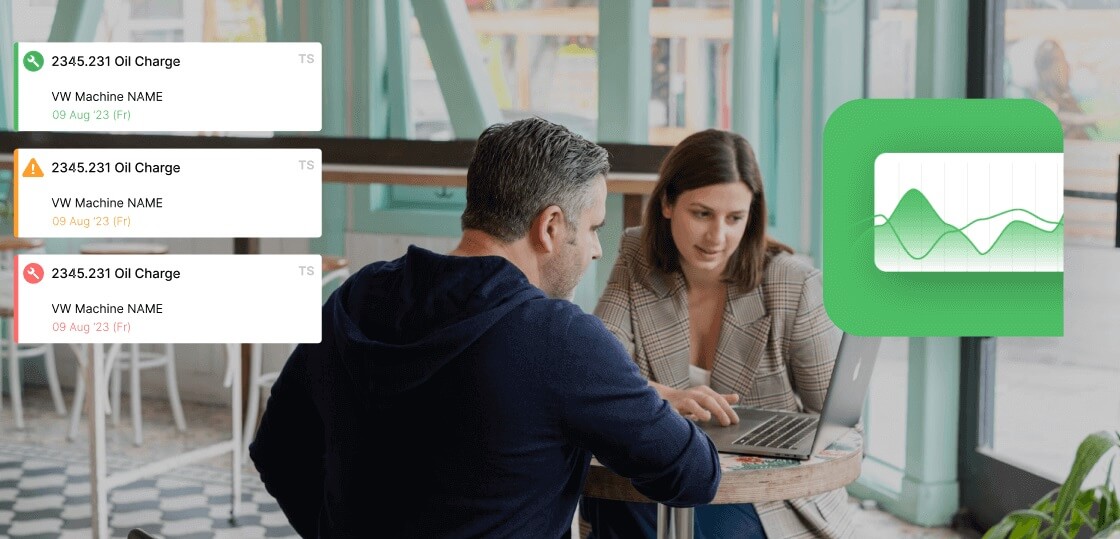There is a statistic from Reliability-Centered Maintenance (RCM) studies that keeps Maintenance Managers awake at night:
Up to 30% of Preventive Maintenance (PM) tasks are unnecessary.
If you are changing a filter every 30 days, but the machine only ran for 40 hours that month, you are wasting money.
Worse, every time a technician touches a machine to perform unnecessary work, there is a risk they will introduce a new fault (human error).
The industry is moving away from Time-Based Maintenance (The Calendar) toward Condition-Based Maintenance (CBM) (The Asset Health).
But many factories hesitate because they think CBM requires millions of euros in IoT sensors.
This is false. If you have Fabrico, you already have the data you need.
Here is how to build a CBM strategy using the OEE data you are already collecting.
The Logic: Why "Calendar" PMs Fail
Legacy CMMS platforms love calendars. They generate work orders on the 1st of the month, regardless of reality.
-
Scenario A: Production was slow. The machine is barely dirty. You clean it anyway. (Waste).
-
Scenario B: Production hit a record high. The machine degraded on the 15th. You wait until the 1st to service it. (Breakdown).
Condition-Based Maintenance aligns the maintenance action with the physical reality of the asset.
Strategy 1: The "Usage" Trigger (Runtime & Cycles)
This is the easiest way to start CBM, and it requires zero new hardware if you are using Fabrico OEE.
Fabrico tracks exactly how many cycles a machine runs and how many hours it is active (Availability). You can map this data directly to the CMMS maintenance schedule.
-
Old Way: "Replace cutting blade every 2 weeks."
-
Fabrico Way: "Replace cutting blade every 50,000 cycles."
The Result:
If production ramps up, the maintenance schedule accelerates automatically. If production stops, maintenance stops. You never over-maintain or under-maintain. You are perfectly synced with production.
Strategy 2: The "Performance" Trigger (OEE Degradation)
Your machine often tells you it is sick before it dies. It doesn't scream; it whispers.
The "whisper" is usually a drop in OEE Performance (Speed) or Quality (Yield).
-
The Signal: Fabrico OEE detects that "Line 4 Filler" has dropped from 300 bottles/minute to 275 bottles/minute.
-
The Logic: This speed loss usually indicates a dirty sensor or a slipping belt.
-
The Action: Fabrico automatically generates a "CBM Inspection" Work Order for the maintenance team.
This creates a Self-Healing Loop. The maintenance team fixes the belt before it snaps, restoring the speed and saving the shift.
Strategy 3: The "Quality" Trigger (Scrap Rates)
Sometimes, the machine runs at full speed, but starts producing bad parts.
In a siloed factory, Quality Control catches this and quarantines the pallet. Maintenance finds out two days later.
In a Fabrico Factory, the spike in "Quality Rejects" (tracked in the OEE module) acts as a Condition Trigger.
Strategy 4: Sensor Integration (Advanced CBM)
For your top 5% most critical assets (Category A in RCM), you should invest in hardware sensors.
-
Vibration Analysis: Detects bearing wear months in advance.
-
Temperature Monitoring: Detects overheating motors or gearboxes.
-
Oil Analysis: Detects internal component degradation.
Fabrico ingests this data via API. When the temperature hits the "Warning" threshold, it alerts the planner. When it hits the "Critical" threshold, it alerts the technician immediately via push notification.
Implementation: How to Transition
Do not cancel all your calendar PMs tomorrow.
-
Audit your Assets: Identify the machines where wear is directly linked to usage (e.g., pumps, conveyors, cutters).
-
Switch to Meter-Based: Change the trigger in Fabrico from "Date" to "Runtime Hours" for these assets.
-
Monitor: Watch the PM schedule adjust itself dynamically based on production volume.
-
Expand: Once comfortable, start adding Performance Triggers based on OEE data.
Summary: Maintenance at the Speed of Production
Static schedules worked in the 1990s. In 2025, manufacturing is dynamic.
If your production schedule changes every day, your maintenance schedule must adapt instantly. Condition-Based Maintenance is the only way to achieve that agility.
Stop serving the calendar. Serve the machine.
[Book a Demo with Fabrico] to see how we turn OEE data into maintenance triggers.







